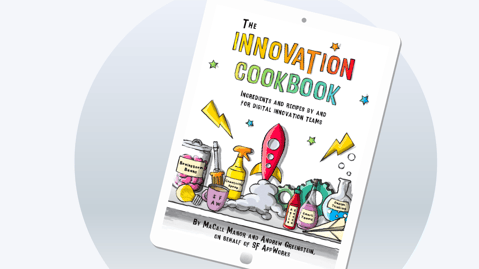Silicon Valley wasn’t what it is now when Erick Hachenburg was growing up in Naperville, Illinois—but it was on the brink of a technology boom that would shape business, innovation process, and even culture as we know them today.
After completing an undergraduate degree in engineering and a law degree from Harvard, Erick was looking for something dynamic and exciting. Head-hunters at Fenwick & West, a small law firm in Palo Alto, were looking for someone with his unique blend of skills. After an extended interview with the firm, Erick's path to entrepreneurship in Silicon Valley was laid.
Erick would spend the next five years consulting tech startups on how to navigate the landscape of intellectual property, corporate financing, revenue generation, and more. His position at Fenwick & West became a glass window through which he could peer into the plight of the 90s Silicon Valley tech startup. He worked with a couple hundred companies over the span of those years, talking to entrepreneurs, designers, and product people about their exciting projects, worries, and plans. He eventually took the full leap into the technology world, where he would hold numerous executive roles at various companies and preside over two big acquisitions—most recently that of Tenor, the original GIF keyboard, by Google, where Erick works today.
We brought Erick on the Innovation Cookbook podcast to hear his insights on startup innovation, acquisitions, and what the shifting landscape of Silicon Valley of today means for innovation.
Startup Innovation Ingredient: A Cross Section of Mastery
Engineering at University of Illinois, Law at Harvard
I remember reading a rather bold quote from Justine Musk, Elon Musk's first wife:
"When you become a master of two worlds (say, engineering and business), you can bring them together in a way that will a) introduce hot ideas to each other, so they can have idea sex and make idea babies that no one has seen before and b) create a competitive advantage because you can move between worlds, speak both languages, connect the tribes, mash the elements to spark fresh creative insight until you wake up with the epiphany that changes your life."
That concept materialized early in our conversation with Erick. While there are a million routes one can take in pursuit of innovation (don't lose hope by thinking this is the only way), I would be remiss to exclude a powerful ingredient in this recipe: a dual-informed perspective. Erick studied engineering as an undergrad before attending Harvard Law School.
Interestingly enough, after completing engineering school at the University of Illinois, Erick didn’t become a programmer. Although he had spent a few summers working at AT&T, he didn’t find anything engaging enough to keep him long term. He decided he would attend either business school or law school, which is how he wound up at Harvard.
He noted that he probably would have gone straight to Silicon Valley after undergrad had he known about it, but “it just wasn’t something everyone knew about at the time.”
A Harvard Alum recruiter was scouring resumes for recent graduates of the law program who had a background in engineering, and fortunately came across Erick’s.
Erick says that after he interviewed with Fenwick & West in Palo Alto, he never looked back.
Get a Free Copy of 'Just Start(up): The Founder's Guide to Becoming The Next Great Thing'
.png?width=379&height=379&name=Just%20start%20up%20ebook%20(1).png)
Startup Innovation Ingredient: A Close Relationship with the Obstacle
Fenwick & West
Erick's waiting room to big tech was five years as an attorney advising entrepreneurs in startups. We asked him what Silicon Valley was like when he was an attorney, and what kind of startups he was talking to at the time.
“I was always very focused on technology, and obviously the reason Fenwick & West was an interesting law firm was because it was at the junction of technology and law. Silicon Valley was all about inventing new things, and the law firms were there to help figure out how to make that happen, both from a corporate financing perspective—getting revenue into the company—but also how to protect and license the intellectual property so that they could build businesses.”
Erick credits his start as an entrepreneur to his time at Fenwick & West—namely the ability it gave him to intimately experience the inner workings of startups.
"I even remember when I started at Fenwick & West, that I told the partner who was recruiting me, I said: this seems great. Five years from now I want to go join a company. And [he said] ‘Sure, that’ll never happen.’ And sure enough, that’s what I did. I spent five years learning about different companies in Silicon Valley and then made my leap out of the law firm."
As a lawyer, Erick’s first focus was on software (rather than hardware), because it was an established industry. From there he narrowed it down to consumer software products, and even at this point in his career was working with companies like Intuit and Electronic Arts—a niche that would lead him into the game space.
“Silicon valley was the center of the video game industry as well, with Electronic Arts being the leading company, with lots and lots of developers. We would oftentimes work with small developers that were partnering with Electronic Arts or trying to make it on their own.”
Get a Free Copy of "The Innovation Cookbook"

Erick's path was shifting toward entertainment software.
Startup Innovation Ingredient: Challenging Assumptions
Changing the ship's course at Total Entertainment Network
Total Entertainment Network was looking for a lawyer to help them out, because the company was doing something very innovative. The internet had finally come into its own, and TEN was trying to figure out how to take video games online. Back then, almost every game was a retail game that users would play alone—and although some people would play local area networks, it was pretty hard to play on the internet during that time.
The latency requirements, meaning how good your connection was and how fast the data could be transmitted, were essential to having a good gameplay experience. TEN was trying to figure out how to get a quality connection and make it so you could play opponents all around the world.
Says Erick, “basically TEN was trying to figure out how to make that possible, which was right up my alley, in terms of the things I was focused on. It was entertainment software, [had to do with] the internet, and we had to do a ton of deals. We had to license these games from companies and figure out how to make them available to consumers—so it was a perfect fit for me.”
I asked Erick if he was a gamer.
“I definitely played games...I was never that guy who would stay up all night—well that’s not true, there were times when I would stay up all night playing a game. I definitely loved games, but I was mostly playing the Silicon Valley game, and didn’t have that much time to be a gamer. But I definitely knew the industry well and was definitely involved with all the companies in the space and certainly loved the industry.”
In the world of technology, the only constant is change. Erick hasn’t just seen—he has, in some sense, been the man behind the curtain during some of the most iconic shifts in Silicon Valley. We talked to him about these changes, and whether he believes anything from the 90s still holds true.
“A ton has changed in the industry [since the 90s]. A ton has changed and some has not. I still think the life of a startup is similar, in that you have to throw yourself into it and be fully committed to it, that you’re driven by your vision, this belief that you can make a difference—that you can change things. I know there’s a lot of talk about whether that is still a part of Silicon Valley, right: ‘is it all about money now as opposed to about innovation or about changing the world?"
Erick thinks that the main similarity between today and the 90s is that entrepreneurs need to be highly committed to their vision and mission to succeed. While economically trying times between then and now have surely yielded financially-rooted motives, but that’s to be expected. People are fundamentally motivated to chase their dreams and make a difference in the world around them.
But he also said that a lot of things are radically different, namely the capital requirements to get off the ground, accessibility, and the general speed at which things could be done.
“When we were building TEN, we were in the middle of San Francisco and we built an entire data center of our own. I mean, it took millions and millions of dollars to build the room and put the equipment in the room, on the 6th floor of a brick building in the middle of Soma, before Soma was built. That’s something that’s changed entirely—six stories was a tall building back then, in Soma. We literally flew a backup generator in by helicopter to put on the roof to make sure we wouldn’t go down in a power outage. I mean, no one does that anymore...We literally had to put millions of dollars into our data center, just to even get our business off the ground, and that just doesn’t exist anymore...Cloud solutions have fundamentally changed the world.”
A noteworthy shift in the innovation process between the 90s and today is the product visionary’s relationship with the feedback loop.
“Instead of having to wait months or even years at times to get feedback on your product idea, you now can get feedback so much quicker, so a lot of what you see is that the development processes have changed, to take advantage of that, to move more quickly. And I do think it leads to...well it was definitely important to be innovative back in the 90s, but there’s more pressure to be innovative all the time now, because you can get feedback so quickly and know whether something is working or not working, so you’re onto your next idea or your next tweak of the idea, or your next feature—there are just much faster cycles.”
In terms of consumer feedback, companies in the 90s needed to wait until products were launched, but the issue was that it took years to launch, and could only do so after millions of dollars of budget were spent to develop products. Beta tests were still used to make adjustments based on feedback, but how to get that meaningful feedback, namely how long it took to get, posed a much bigger obstacle.
Erick joined Total Entertainment Network (TEN) because he bought into the concept fully. People were spending more money on video games than essentially any other form of visual entertainment. The company wanted to cater to its fanatical audience and launch a subscription service that would give users access to a better online gaming experience. As the company’s endeavor was unfolding, suddenly “free” hit the Internet.
“Everything was free. Free advertising base. Biggest audience possible. Everything that we were going after...and we were looking around thinking, ‘we’re the last subscription service standing.’ ...So we found ourselves in the exact 180 degrees from the direction we need[ed] to be going.”
We asked about the darkest moment from that period.
He recalls the moment when Vinod Khosla pulled him aside to tell (not ask) him that the CEO was leaving, and that Erick would be the successor.
“...that was dark in some respects, because it’s like, admitting defeat. But it was also kind of exciting...but that’s how it happened...that was the next step in reinventing the company.”
Erick’s first move as CEO of Total Entertainment Network would be to make the product free. At the time deemed “the free front-porch approach,” the effort involved making only some of the services free. It involved a lot of strategic work, exploring which parts of the product would be free, what the business model would look like, whether sponsorships could be factored in, etc.
“We even launched a service called a “professional gaming league” which I think might be, literally, the first professional gaming league. Everyone thought we were crazy at first—there’s a bunch of them now.”
The point when Vinod came to Erick and said that the business needed to be reinvented was essentially the same moment when he knew he needed to push for something completely new. He knew the company was in the wrong place, and he needed to figure out where it should be.
That’s when they identified every assumption, and questioned all of them.
The idea that the service would be subscription was obviously a main challenge, but Erick also made an interesting decision about the company’s audience. Instead of hardcore games, they would switch to casual games. They would also shift from a predominantly male audience to something more broad-based that would be marketed to women.
This reimagining of approach went as deep as the very architecture of their technology.
"We had an embedded idea that a proprietary client, meaning a downloadable C++ client, was the only way to deliver the service that we wanted. And Vinod pushed us really hard, because he was also investing in things like Java at the time—he was like ‘no. It needs to be a web-based service. It has to run in the browser. It has to work.’ And Java was the way you did that, so we reinvented that. So every assumption—not just like business model and users—I mean even the technology approach… was no longer going to be proprietary, but an open web system."
Startup Innovation Ingredient: Strong Distribution Partnerships
We wanted to know more about the room where these decisions were being made, and who they fell to. Erick said that the leadership team was responsible for the decision making, but company culture was a big deal to him as the CEO. He was concerned about how to motivate and inspire the people working there when he was fundamentally changing the company they came to work for.
Another obstacle Erick faced was the carriage and distribution of the product. During the first wave of the internet, the standard way to be distributed involved paying a carrier like AOL, Yahoo, or Excite millions of dollars to be featured as a solution on their home page. Deals would go as high as $100 million—money TEN didn’t necessarily have, so the question was, how could it get in front of consumers?
To address this, the company built a rev-share model. They would take on the costs of running the service, and generate revenue from ad sales, and split it with partners 50/50. Erick notes that Vinod Khosla was instrumental in connecting the company with partners in the industry. The partnerships were crucial to the success of the business, and navigating the negotiation process was something entirely new.
“It is funny also...the business models were so new, you would literally go to meetings sometimes with the big distribution partner and the games company (and the games industry was a big industry, right? People understood that it was different and valuable—it wasn’t just an information service, it was more than that. It was an experience) ...but you would literally go to meetings and not know who was going to pay who. Like, ‘so...what’s the deal gonna look like? Are you paying me or am I paying you?’ You could see it in both people’s eyes, like: what would be better? Do I want to control this? Do I want to pay this? Do I want to not pay this? And you did not know what the other person was thinking because either was possible.”
Exploring a partnership meant exploring possibilities for the future of a business. Focusing heavily on that first partnership would provide a framework for what would be mutually beneficial between companies. Erick (a talented negotiator) offered the following insight, taken from what he learned during that point in his career.
"...the funny thing about the story about ‘you don’t who’s gonna do what’, right, is that because of the uncertainty, you should come in with a plan. You should lay the anchor for what you want to happen because that will be the negotiation starting position. The point about the first deal is: you have a clear anchor. We have done this with this other company; this is how it’s working. People take that for granted. Setting your anchor is hugely important in terms of where the conversation starts, or where it will end up."
We asked how he would advise a startup thinking about its first partnership.
He noted that his experience is specific to consumer businesses, with a predominant issue being: how to get in front of customers. He’s found that the answer to that question is always through distribution. Although you can spend a lot of money on marketing if you have the budget, most companies don’t have that luxury.
"You just have to have a strategy for getting in front of customers. ‘If you build it, they will come,’ is not in fact the case. It is a field of dreams, it is not real. You have to have some strategy. I for one, in my career, have often tried to figure out distribution partnerships. Figuring out those distribution partnerships early is important because that’s my bet. It’s the way you can get in front of consumers without having to pay a lot of money, and if you can pull it off, that’s a big win."
Under Erick's leadership, Total Entertainment Network’s name was changed to POGO in 1998, and the company was acquired in 2001 by Electronic Arts.



COMMENTS